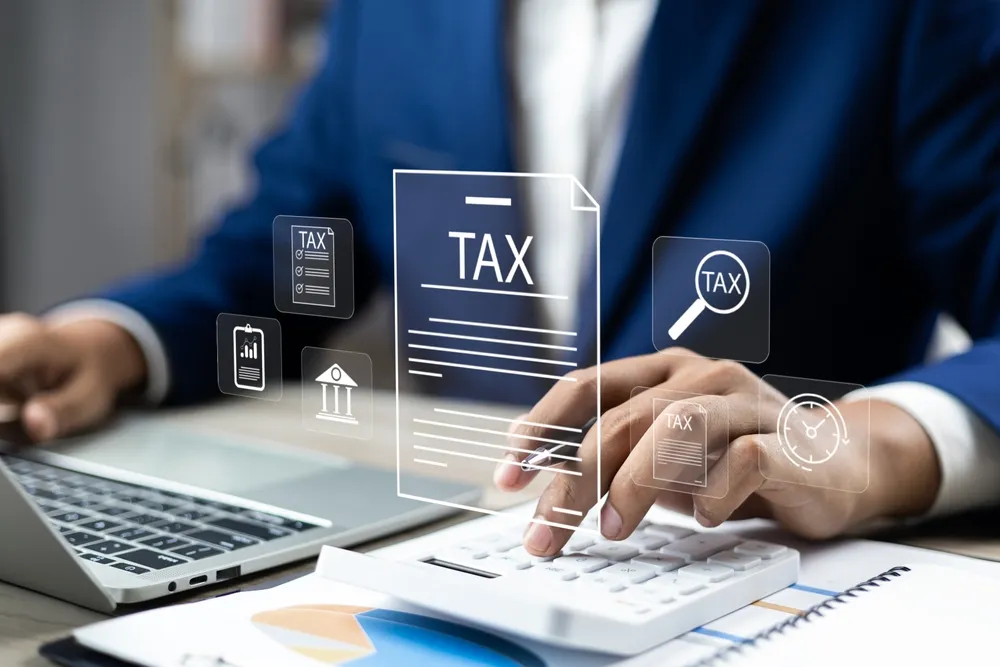Personal Finance News
How the New Tax Regime has evolved through FM Nirmala Sitharaman's Budget speeches

5 min read | Updated on January 02, 2025, 18:51 IST
SUMMARY
As FM Sitharaman prepares for another Budget speech on February 1, 2025, experts believe that she will further sweeten the new regime to attract more taxpayers.

The new tax regime became the default option on the ITR e-filing portal from AY 2024-25. Representational image
In just a few years, the new tax regime has become the preferred option for most income-tax return (ITR) filers.
The finance ministry’s data shows that about 72% of 7.28 crore taxpayers opted for the new tax regime while filing ITRs for AY 2024-25 before the due date on July 31, 2024. Only 28% of taxpayers opted for the old tax regime.
The share of returns filed under the old tax regime is expected to shrink further as the government continues to sweeten the new tax regime in every budget.
This article traces the evolution of the new tax regime as presented in Finance Minister Nirmala Sitharaman's past budget speeches.
An optional regime in 2020
The new tax regime was first introduced by FM Nirmala Sitharaman, in her Budget speech on February 1, 2020. It was an “optional” and "simplified” personal income tax regime with "significantly reduced” tax rates.
But this simplified regime came at a cost. Taxpayers opting for the new regime had to forgo certain deductions and exemptions they enjoyed under the old tax regime.
Explaining the need for such a simplified tax regime, the FM said the Income Tax Act was "riddled with various exemptions and deductions" that made compliance by taxpayers and their administration by the tax authorities "a burdensome process."
"It is almost impossible for a taxpayer to comply with the income-tax law without taking help from professionals," she said.
The new tax regime announced by FM Sitharaman in Budget 2020 had six taxable slabs with no deductions or exemptions.
| Taxable income slab (₹) | Tax rates |
|---|---|
| 0-2.5 lakh | Exempt |
| 2.5-5 lakh | 5% |
| 5-7.5 lakh | 10% |
| 7.5-10 lakh | 15% |
| 10-12.5 lakh | 20% |
| 12.5-15 lakh | 25% |
| Above 15 lakh | 30% |
The FM said that the new regime would result in substantial savings for taxpayers.
For example, a person earning ₹15 lakh in a year and not availing any deductions will pay only ₹1,95,000 compared to ₹2,73,000 in the old regime.
However, she highlighted that the new tax regime would not be compulsory.
“The new tax regime shall be optional for the taxpayers. An individual who is currently availing more deductions and exemptions under the Income Tax Act may choose to avail them and continue to pay tax in the old regime,” she said.
Default regime in 2023
No changes in the new tax regime were announced in the Budget speeches of 2021 and 2022.
However, in her Budget 2023 speech, the FM set a clear direction for the future of the new tax regime.
She said it would be the default tax regime going forward.
The new tax regime became the default option on the ITR e-filing portal from AY 2024-25 (FY 2023-24).
While taxpayers continue to have the option of availing the benefits of the old tax regime, they need to declare their choice before filing returns.
In a bid to attract more taxpayers, the FM made the new tax regime more appealing with the following announcements:
- No tax on persons with income up to ₹7 lakh
- Number of taxable slabs reduced to 5
- Basic tax exemption limit raised to ₹3lakh from ₹2.5 lakh
- Standard deduction of ₹50,000 for salaried and pensioners, and ₹15,000 for family pension
- Maximum tax rate slashed to 39% from 42.74%
| Taxable income slab (₹) | Tax rate |
|---|---|
| 0-3 lakh | Nil |
| 3-6 lakh | 5% |
| 6-9 lakh | 10% |
| 9-12 lakh | 15% |
| 12-15 lakh | 20% |
| Above 15 lakh | 30% |
The FM said the revised tax slabs under the new regime will provide more benefits to taxpayers.
Focus on salaried in 2024
FM Sitharaman’s Budget speech in 2024 sought to further enhance the appeal of the new tax regime among salaried employees and pensioners.
She not only revised the tax slabs and rates but also increased the standard deduction limit for salaried employees and pensioners to ₹75,000 from ₹50,000.
Further, private-sector employees in the new tax regime were allowed to claim a deduction of up to 14% of the basic salary invested under the National Pension System (NPS).
| Taxable income slab (₹) | Tax rate |
|---|---|
| 0-3 lakh | Nil |
| 3-7 lakh | 5% |
| 7- 10 lakh | 10% |
| 10-12 lakh | 15% |
| 12-15 lakh | 20% |
| Above 15 lakh | 30% |
By signing up you agree to Upstox’s Terms & Conditions
About The Author
Next Story

